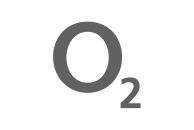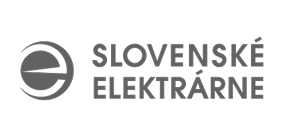
Each week, we bring you 5 stories that resonated the most in our internal Slack channel #AI-news. We write the newsletter using various AI tools because we're an AI company and our marketing wants to move with the times too. 😎
Today you're reading the 42nd issue in a row.
#1
We, Robot event by Tesla 🤖: Cybercab and Robovan are changing the game in transportation 🚗⚡.
Tesla pulled off some big surprises at the We, Robot event. First, it officially showed off the Cybercab, an autonomous taxi that drives without anyone having to drive it 🚗⚡. This self-driving electric car can really shuffle the cards in the taxi business 🚖🤖. But the real shock came when they showed Robovan, an autonomous van that can take up to 20 people or cargo for ridiculously low cost 🛻👥. So Tesla has once again pushed the bar and is heading to completely change transportation with fully autonomous vehicles.
In addition to the cars, Tesla also unveiled improvements to its humanoid robot Optimus 🤖. This robot could help with everyday things like walking the dog 🐕 or grocery shopping 🛒. Although it's still in the pipeline, it's Musk's idea of a world where robots do all sorts of chores, which could reduce the cost of utilities.
These announcements underline Tesla's ambition to not only revolutionise transportation, but also introduce robotics into our everyday lives. And what do you think about this 😊?
#2
Hopfield and Hinton 🧠: AI pioneers win Nobel Prize in Physics 🛠️🏆.
John Hopfield 🧠 and Geoffrey Hinton 🤖 have been awarded the 2024 Nobel Prize 🏆 in Physics for their major contributions to artificial intelligence 💡 and machine learning. Their work laid the foundation for modern AI technologies that are now commonly used in fields such as healthcare, science and engineering 🛠️.
Hinton, known as the "godfather of artificial intelligence" 👨🏫, helped create systems that can learn from data 📊, leading to major breakthroughs in image recognition and other tasks. He recently retired from Google 💼 and has spoken openly about the potential risks of AI, expressing concerns that machines could "leapfrog" us 🏃♂️ in intelligence sooner than we expect.
Hopfield, who is now a professor emeritus at Princeton 🎓, created a memory model that allows machines to store and reconstruct patterns, which has played a key role in the development of complex AI systems 🤯. Both researchers expressed concern about the unknown future of AI and stressed the importance of using it responsibly 🤝.
Their work has revolutionized not only technology but also everyday life, which is why they deserve this prestigious award 🥇. We hereby congratulate them 👏 and wish them many more successes 🎉!
#3
When AI text detectors fail ❌: 97% of the Declaration of Independence was supposedly written by artificial intelligence! 🤖🤯.
LinkedIn user Christopher Penn shared a hilarious discovery: a popular AI text detector (which its creators called "the most advanced AI detector on the market") claimed that 97% of the US Declaration of Independence was written by artificial intelligence 🤖📜.
This wasn't some random mistake - it shows a deeper problem with how these detectors work ⚙️. Namely, these tools track basic patterns in text, such as word repetition and sentence structure, which can lead to poor identification of well-written, older texts ✍️📖.
If this wasn't enough ❌, many AI detectors are built using smaller AI models that have been trained on historical texts such as The Declaration 🏛️. When they then come across such texts, they often label them as AI-generated just because they are similar to what the models were trained on 🤔🤦♂️.
This shows how faulty these AI detectors can be. Instead of blindly trusting their results, we need better ways to verify where the content is coming from, especially in schools or at work 🏫💼 where these bugs could cause real problems. What do you think about this 🤷♀️?
Christopher Penn's post on LinkedIn
#4
Canvas 🖼️: A new help for ChatGPT developers from OpenAI 💻🤖.
OpenAI has introduced a new interface, Canvas 🖼️, to simplify coding within ChatGPT 💻. This feature adds a workspace next to the regular chat window where users can write code directly in Canvas and make edits by highlighting specific parts of their code ✍️. Users can easily request changes without having to start from scratch 🔄.
This new approach solves a common problem of AI tools 🤖 - they can't handle large, complex projects all at once. By offering an editable workspace 🛠️, OpenAI makes it easier for users to fine-tune the results 🎯. It's a smart move that keeps up with competitors like Anthropic's Cursor and Artifacts, and improves the way humans can collaborate with AI on their tasks 🤝.
Canvas is currently available in beta for ChatGPT Plus and Teams, but will soon expand to Enterprise and Edu users 🏫. Later it will also be available for free users. The goal of this feature is to increase productivity by making it easier to code with the help of ChatGPT 🚀.
#5
HeyGen Avatar 3.0 🌐🎥: AI avatar naturalness improvements and creating your own AI "clone" 🧑🤝🧑.
HeyGen 🎥 has just launched Avatar 3.0, a tool that brings big news to the world of virtual avatars 🌐.
AI Avatars can now not only lip sync more accurately 🗣️, but also change their tone of voice 🎶, show accurate facial expressions and even move their hands and body 🙌. This makes them able to show emotions much more naturally, which is perfect for creating video content 🎬.
One of the most interesting features? Users can "clone" themselves 🧑🤝🧑 and create an AI avatar that looks and acts exactly like them - in different poses, outfits 👗 and from different camera angles 📸. This brings endless possibilities for pro videos, presentations and even singing performances 🎤, because Avatar 3.0 can also "sing" 🎶!
Post on social network X (ex-Twitter)











